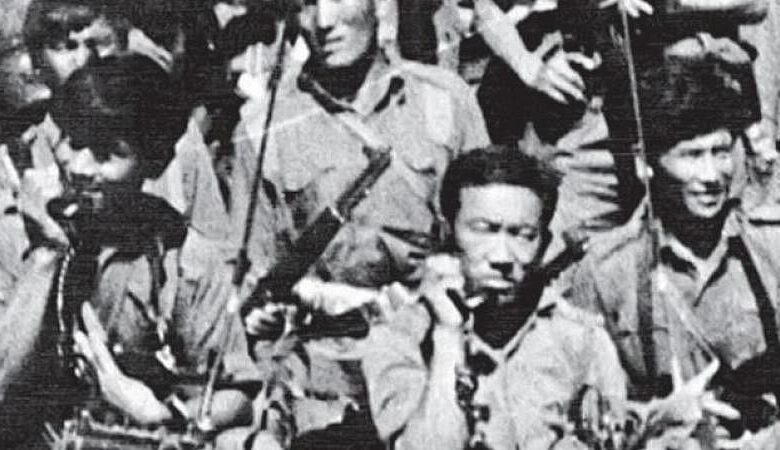How Indians trained Tibetans to fight on the side of Bangladesh

Numerous outfits, both local and foreign, were fought in the Bangladesh liberation war. A forgotten troupe of these struggles is the Tibetan guerrillas. Being refugees themselves, thanks to the Chinese intervention in Tibet (1959), the Tibetans formed Special Frontier Forces (SFF) which fought in the war alongside BLF, Muktibahini, and other local units. SSF was formed by the end of the Indo-Chinese war of 1962. The group was trained by Indian Intelligence Bureau (IIB). The strength of the unit was approximately 12,000 soldiers and 64 companies. Commander of 22 Mountain Brigade Major General Sujan Singh Uban was the designated commander of this group. Major Uban was also involved with the famed Bangladesh Liberation Force (BLF) AKA Mujib Bahini.
SFF was formed to fight China mainly. But as the situation demanded, they were instead sent to fight the Pakistani army in Bangladesh. The idea of using Tibetans came from Orissa Chief Minister Biju Patnaik. Soon Bholanath Mullick, Indian intelligence Chief took up the role to form SSF. They were trained in Dehradun Military Academy in Uttar Pradesh. The delta region was in flames by 1971 as Muktibahini clashed with invading Pakistani army. After much discussion and debate, SSF was decided to involve in the war. Upon the request of Indian Prime Minister India Gandhi, SFF commanders agreed to join the struggle. With the permission of Dalai Lama, SSF joined ‘Operation Mountain Eagle’ in the later arts of October 1971; a secret, Research and Analysis Wing (RAW) led operation.
As the Tibetans were skilled and familiar with mountainous terrain, the Indian high command decided to use them in the hilly region of Southeast Bangladesh. The Chittagong Hill Tracts (CHT) and the adjoining region of Chittagong fell under Sector 1 and were a theatre of many hard-fought battles. The unit was first sent to Demagiri, a small border outpost overfilled by refugees in the Mizoram area, adjacent to Bangladesh. About 3,000 Tibetans were sent, they took the hit and run tactics across the border inside CHT. Their task was to sabotage and disrupt the Pakistani troop movement, eventually ripening the CHT for an Indian invasion. It’s also to be noted, One of the tribal kings of CHT, Pradip Roy, was on the Pakistani side, and the invaders also used Mizo groups, rebellious to the Indian government, to fight local guerilla outfits along with 97th Brigade and a commando battalion. The SSF proved to be a force to be reckoned with.
SFF attacked and captured numerous Pakistani bases within just 10 days of operation. One camp after another: Dhanubak, Dighalcchari, Barkal, Boroitoli, Shubholong, and Khagrachari. By 12 of December, except Chittagong city and some urban points, the entire region was freed and the Pakistanis couldn’t escape to Myanmar. Divided into three columns, they were led by a Tibetan Dapon (Brigadier) and an Indian colonel. Pakistan Army never thought CHT would become such a tough warzone. Within a month, Pakistani defense fell apart.
On the Tibetan side, the cost was minimal. 49 dead, along with one brigadier and 190 injured. After the independence of Bangladesh, the Father of the Nation Bangabandhu Sheikh Mujibur Rahman personally called and thanked SSF guerrillas and their Indian trainers and commanders. The secret operation never came under the spotlight and to this date, the contribution of these Indian trained fighters remains mostly shadowed. However, the role of SSF in the Bangladesh Liberation war remains a prime example of India’s goodwill and effort to assist Bangladeshis in their struggle. After the victory of 16th December, Bangladeshis in Chittagong, alongside many Indian soldiers were astounded to find Tibetan force, whose presence was kept secret during the war and years following that. The Indian government has awarded 580 Tibetans for their heroic role in the Liberation war.




